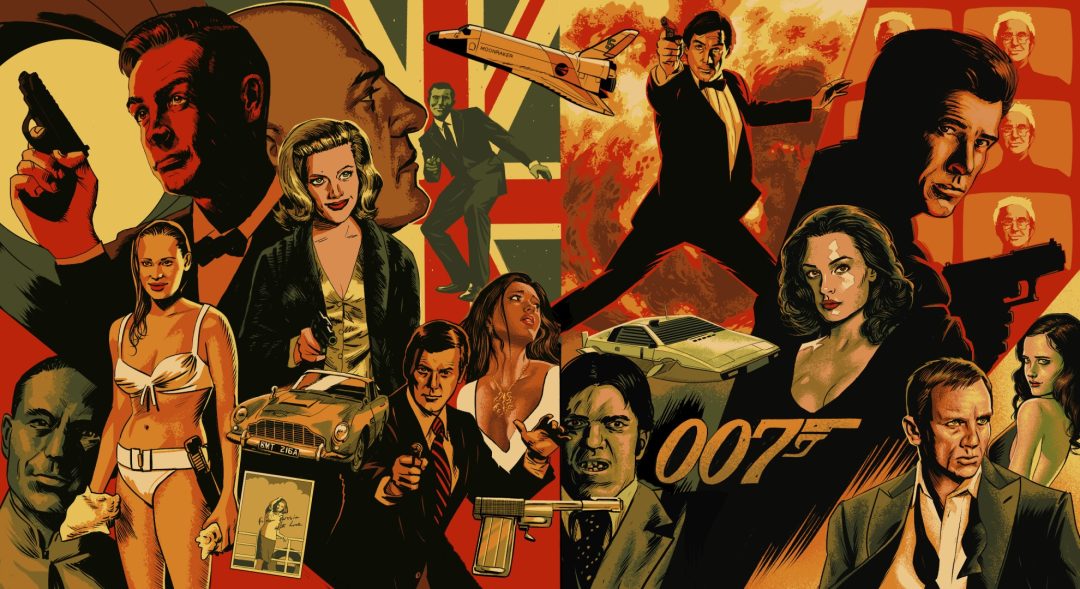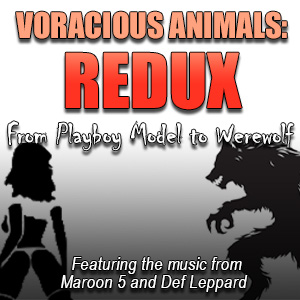The Dalton era, with its new, harder edge and darker, more adult themes, was off and running. And then, suddenly… it wasn’t. For a very long time, it really looked as if that was it. James Bond was over. He had been defeated not by SMERSH, dastardly Russians, SPECTRE, or a megalomaniac with a shark tank. After sixteen official movies, numerous copies, parodies, books, toys, and comics, the (at the time) highest-grossing and longest-running Western movie franchise had been brought low by something far, far worse. Lawyers. GoldenEye very nearly didn’t happen.
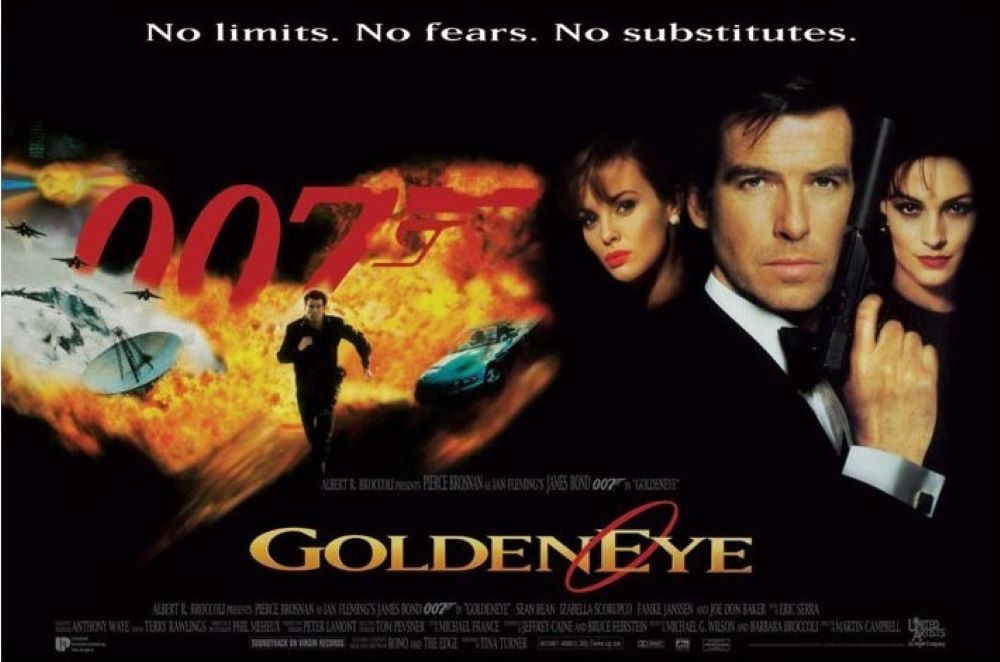
GoldenEye – Behind The Scenes
As was completely normal with the James Bond franchise, pre-production had already started on Bond 17 while Licence to Kill was already in post-production. This would have been the third movie in Dalton’s three-film contract, but talks were also tentatively starting to extend that contract for a fourth, and possibly fifth, turn in the tuxedo.
The project was even announced at the 1990 Cannes Film Festival, with a giant poster at the Carlton Hotel.
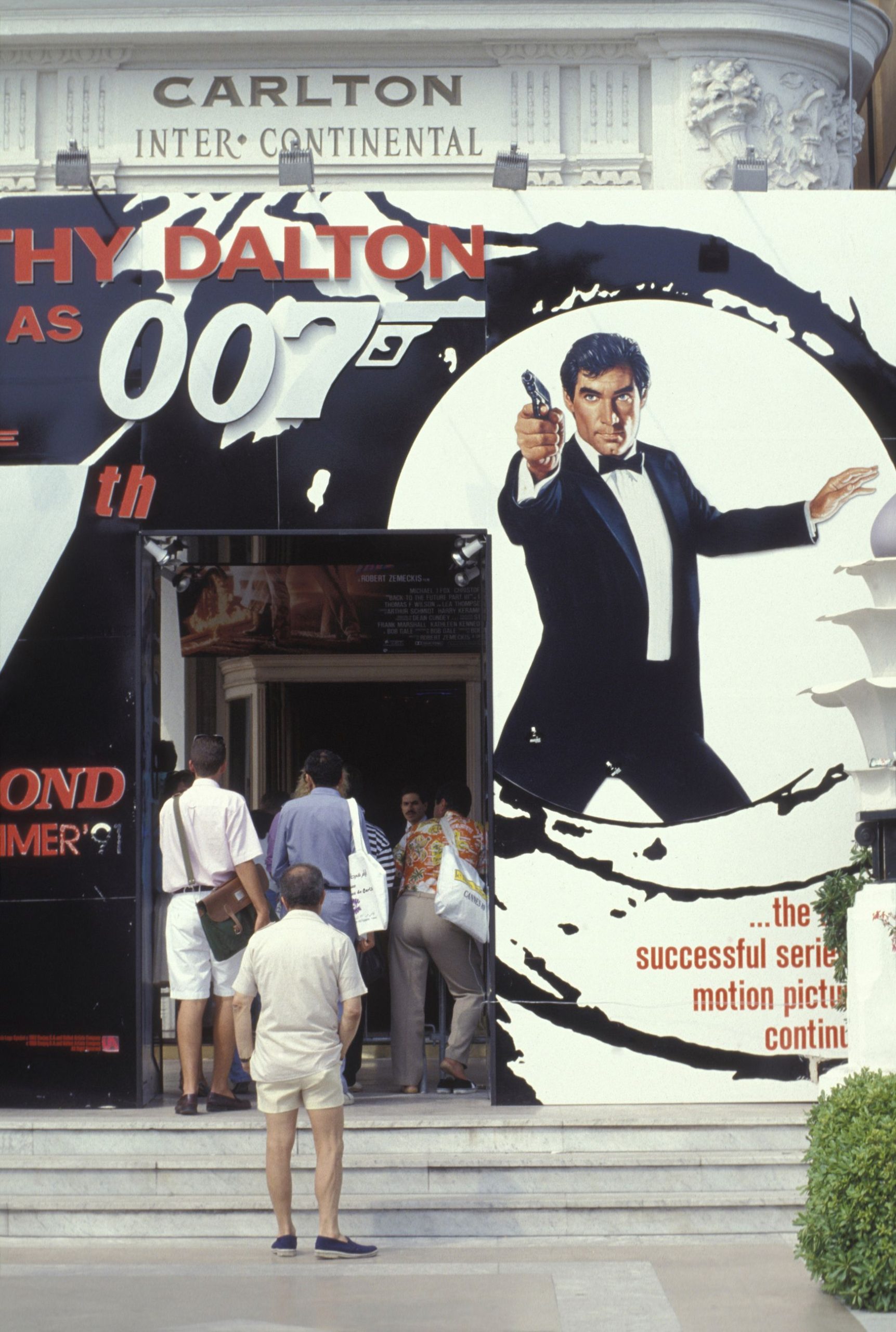
Looking to continue this new direction for Bond, Broccoli decided to talk to new directors and new writers, meaning long-time Bond stalwarts John Glen and Richard Maibaum were not to return. Meetings were taken with John Landis, Ted Kotcheff, Roger Spottiswoode, and John Byrum, among others.
Broccoli’s stepson Michael G. Wilson drafted a script, which was subsequently polished by Wiseguy co-producer Alfonse Ruggiero Jr. This was set around the British / Chinese 100-year agreement on Hong Kong ending and a series of terrorist attacks aimed at getting both Britain and China to give up Hong Kong.
It featured a veteran agent from Bond’s past, and the villain was a corrupt British-Hong Kong technology magnate called Sir Henry Lee Ching.
With production set to start in Hong Kong later in 1990, Wilson and Ruggiero revised the plot further to feature a hang-gliding sequence and the remote hijacking of a British Harrier fighter to be deliberately crashed into a Chinese village.
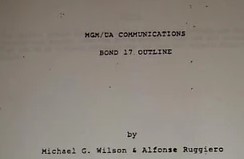
Broccoli was still not fully convinced by the script. Meanwhile, events elsewhere in the world such as the Gulf War overtook production. As a result, Libya became a prime location, and chemical weapons were featured in the plot, as did stealth technology.
All of these plot threads were looped back to the Hong Kong-based villain, who this time was using them to support a coup in China that would, in return, leave him in control of Hong Kong.
Dalton was set, a director announcement was imminent and production neared its start.
However, behind the scenes, all was not well. When Harry Saltzman sold his stake to United Artists after The Man With The Golden Gun, it left ownership of Bond split between Broccoli’s Danjaq (owner of Eon Productions) and the studio. Eon had full creative control, but UA had a say.
United Artists had subsequently been bought by MGM in 1981, leaving MGM/UA now owning that share of the rights.
MGM had been struggling for a few years and was to be sold for $1.5 billion to Qintex, an Australian-American financial services company that had begun purchasing television and entertainment entities because it wanted in on the business.
Qintex proved unable to provide a $50 million letter of credit, so the deal fell apart.
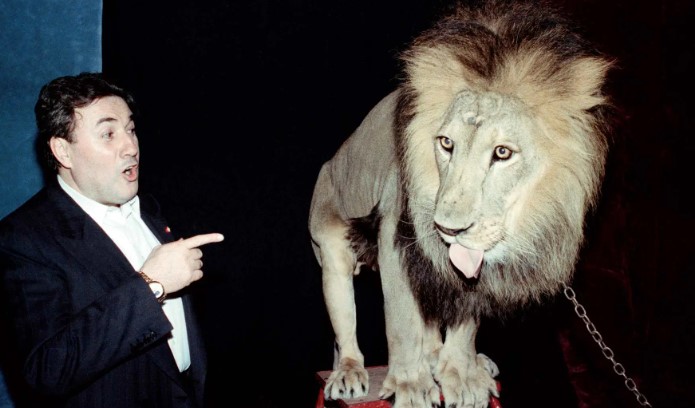
Sensing an opportunity, Giancarlo Parretti, CEO of a company called Pathé Entertainment (not related in any way to the French studio Pathé) quickly moved in to buy MGM/UA for $1.2 billion. He would eventually go on to be involved in the insanity of Cannon Films. Here, he merged the companies to create MGM-Pathé Communications.
This was a leveraged buyout, and Parretti intended to fund it by pre-selling the distribution rights to the studio’s catalog so he could collect advance payments to finance his movies.
He struck a deal to sell the international broadcasting rights to the 007 library at cut-rate prices.
“Not so fast!” said Cubby. They are not yours to sell like that. Furthermore, you are violating the James Bond distribution agreements the company made with United Artists in 1962, and also were seriously undervaluing the IP, plus denying Danjaq a share of the profits. Cubby and the lawyers landed on Parretti and his new organization hard.
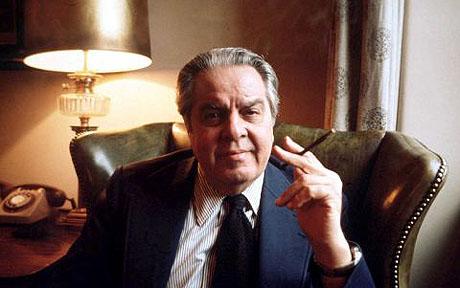
Parretti counter-sued. There were allegations flying in both directions, of breaches of fiduciary duty and of attempts to defraud. The case became famous in Hollywood. All the time, a new Bond movie could not be made.
Parretti’s behavior led to the bankruptcy of MGM-Pathé, and additional lawsuits came flying in. Eventually, the financial backers lost patience and Crédit Lyonnais foreclosed on them. With MGM-Pathe renamed as Metro-Goldwyn-Mayer and run as a subsidiary of Crédit Lyonnais, the first thing they did was settle with the co-owner of their most famous franchise.
A new deal was put in place and from 1993 they sat down with Danjaq to start work on Bond 17 again.
However, two big problems existed.
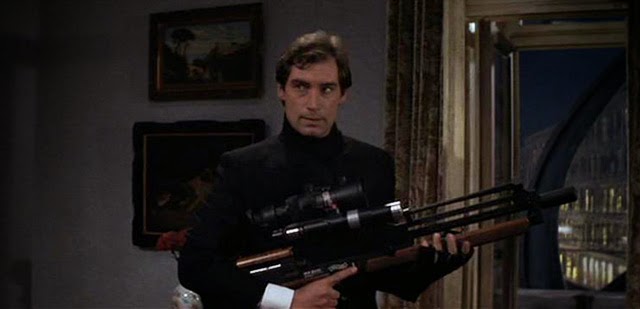
Dalton had a contract for three movies, or for seven years, whichever came first. The seven years were now up. Tired of the legal issues, and with his name having been associated with Bond for nearly a decade but with very little output, he chose to walk away from the role.
Secondly, all of this had started to take a serious toll on Cubby’s health.
With no Bond, Eon Productions went back to the beginning and started with a blank page. Michael France was brought in as a writer, and he took his role very seriously. He traveled to Russia to interview former KGB agents and visit nuclear research laboratories. He worked with Wilson, and they crafted a story set against the backdrop of the fall of the USSR and concerns over the proliferation of weapons of mass destruction in the aftermath.
Broccoli’s health continued to deteriorate, and he took more of a backseat as Wilson and Cubby’s daughter, Barbara, led from the front. Broccoli did reach out to Dalton and shared the draft script with him. Dalton was excited by the script and said he would come back to complete the final movie of his contract.
Broccoli felt differently. After such a long gap, he felt Dalton needed to do more than one movie, and he wanted him to appear in another three, or as many as five. Dalton grudgingly agreed with Cubby’s reasoning, but felt he could not commit to what would have eventually been nearly another decade. As a result, he was definitely out. His official resignation from the role was announced to the press.
With a new Bond on the horizon, the script was re-written yet again. The character of “Augustus Trevelyan”, Bond’s MI6 superior and mentor in his past, and now a defector to the Soviet Union was the main villain in this version. Sir Anthony Hopkins was in talks to take the role.
There was the stolen orbital EMP weapon, and a cold open featuring an Aston Martin chasing a high-speed train to introduce the new Bond. With no 007 book titles left to use, and not liking any of the short story titles left, both the weapon and the movie itself were named GoldenEye, after author Ian Fleming’s Jamaican cottage where he had written the novels.

Barbara Broccoli felt the screenplay needed more structure and turned to Jeffrey Caine for a rewrite. He created the pre-title scene as a prologue and changed the Trevelyan character to be Bond’s peer. While this opened up new story possibilities, it meant Hopkins could no longer take the role.
While searching for a director, Eon had been speaking to John Woo. As the action in the developing script turned away from the Far East focus, he said he was honored to be considered but dropped out of the running. Michael Caton-Jones and Peter Medak were both considered before the producers decided on New Zealander Martin Campbell.
However, they still didn’t have a James Bond.
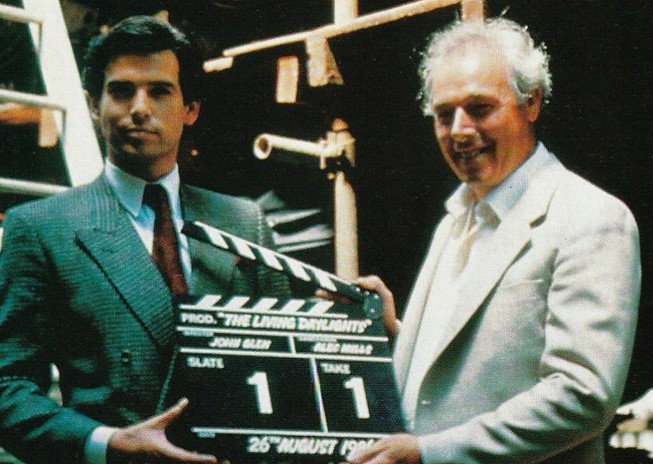
Knowing that going back to Brosnan after his near miss for The Living Daylights would cost them, producers spoke to several other actors. Mel Gibson, Hugh Grant, Ralph Fiennes, and Liam Neeson all had various levels of discussion before they circled back to Brosnan. Doctor Who actor Paul McGann also auditioned and was their fallback position should Brosnan decline the role.
Eventually settling on a salary of $1.2 million for GoldenEye, Brosnan confirmed and the new Bond was go. They still faced an uphill struggle.
In the six years since Licence to Kill, world politics had changed dramatically. The Berlin Wall had fallen and the Soviet Union had dissolved. Many casual observers thought Bond was over after a six-year gap. Commentators doubted the character’s relevance in the modern world. Film industry insiders even went as far as to say it was “futile” for the Bond series to make a comeback, referring to it as “an icon of the past”.
With third-wave feminism taking root in the West, and political correctness starting to permeate culture, the odds seemed stacked against this new Bond.
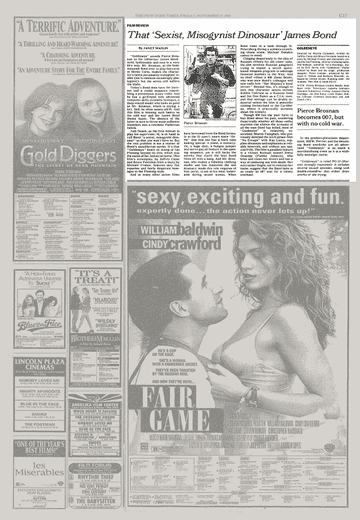
The producers doubled down, pushing ahead with the revitalization but refusing to bend to the prevailing winds and change the core of Bond. Ignoring a cavalcade of calls by the press and commentators for a female Bond or a black Bond, they understood what was needed as a constant for another “relaunch” of the character.
They did, however, refresh the team around him with a new M, Moneypenny, and Tanner.
After screaming that Bond needed to change, a new set of commentators then howled with rage over a female M. However, casting one of the finest actresses of her generation, Judi Dench, in the role proved a masterstroke. They even raised two fingers directly at doubters, giving her lines referring to Bond as a “sexist, misogynist dinosaur” and a “relic of the Cold War”, the exact things the press had said about him.
Another challenge was that Eon was unable to film at Pinewood Studios. The facilities they needed were already booked by First Knight. Instead of seeking alternatives around the world, they found an old Rolls-Royce factory at Leavesden Aerodrome in Hertfordshire, which had wide, tall, and open aircraft hangars.
They leased it for the duration of the shoot, turning it into stages, workshops, and offices. Nicknamed “Cubbywood” by the production, Leavesden Studios was born.

All three Star Wars prequels would be shot there, as would the Harry Potter movies. Today owned by Warner Bros., it has grown into one of the world’s premier production facilities.
Location shooting then got underway around the world. The bungee jump was filmed at the Contra Dam in Ticino, Switzerland. The jump was performed by Wayne Michaels and was from a height of 220 metres. Until 2002, it was voted as the best movie stunt of all time. It also set a world record for the highest bungee jump off a fixed structure.
The casino scenes and the Tiger helicopter’s demonstration were shot on location in Monte Carlo. The French Navy provided full use of the frigate La Fayette and their newest helicopter, the Eurocopter Tiger, to the film’s production team.
However, after filming, the producers had a dispute with the French Ministry of Defence over Brosnan’s opposition to French nuclear weapons testing and his involvement with Greenpeace. This resulted in the cancellation of the French premiere of GoldenEye.
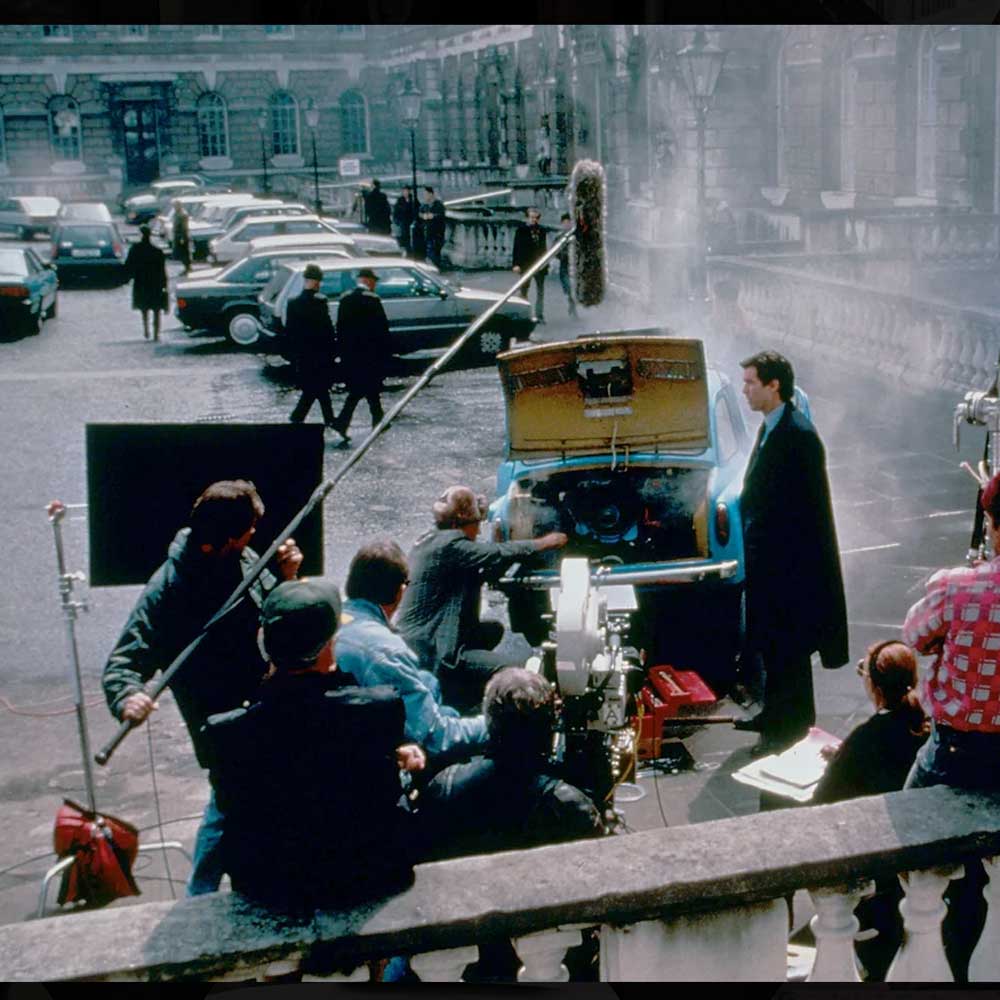
Reference footage for the tank chase was shot on location in Saint Petersburg, but security was questionable for a large production in Russia, with the Russian mafia rising to prominence after the collapse of the Soviet system. To prevent having to pay out vast bribes, St Petersburg was recreated at Leavesden.
The grandstand entrances at Epsom Downs Racecourse doubled as St Petersburg airport, and the Bond stalwart of the Nene Valley Railway doubled as the Russian rail network once again.
Locations would be augmented by the miniatures work of Derek Meddings. GoldenEye would be his last movie, as he sadly passed away after the completion of his work, but prior to the release of the movie. GoldenEye would be dedicated to his memory.
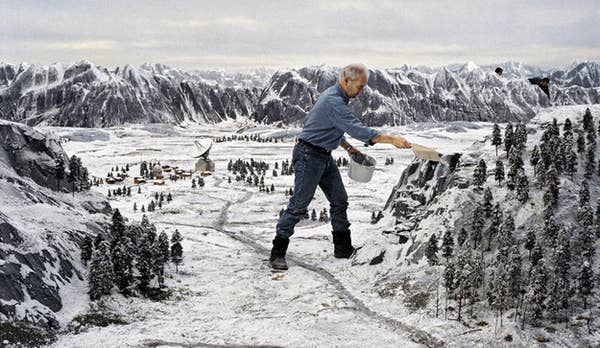
Medding’s model effects include most external shots of Severnaya, the scene where Janus’ train crashes into the tank, and the lake that hides the satellite dish since the producers could not find a round lake in Puerto Rico. The climax in the satellite dish used scenes shot in Arecibo at the real dish and observatory, combined with a model built by Meddings’ team, and scenes shot with stuntmen in Britain.
Barbara Broccoli reached out to John Barry to create the score for GoldenEye, but he declined, still considering himself retired from the 007 music business after a lifelong association. The producers then turned to Eric Serra, hot off projects like Nikita and Leon: The Professional. Serra would clash with director Campbell, who disliked Serra’s electronic approach to the score. The score was not well received, critically.
The title song had a much better reception. U2’s Bono and The Edge wrote the song but did not wish to perform it, feeling it needed a more classic Bond vocal approach. Bono sent a demo to Tina Turner who loved the song and agreed to join their collaboration.
The first cut of the movie was awarded a UK 15 certificate and an R-rating in the US, just like License To Kill. This had to change to hit PG-13, and as a result, some edits were made.
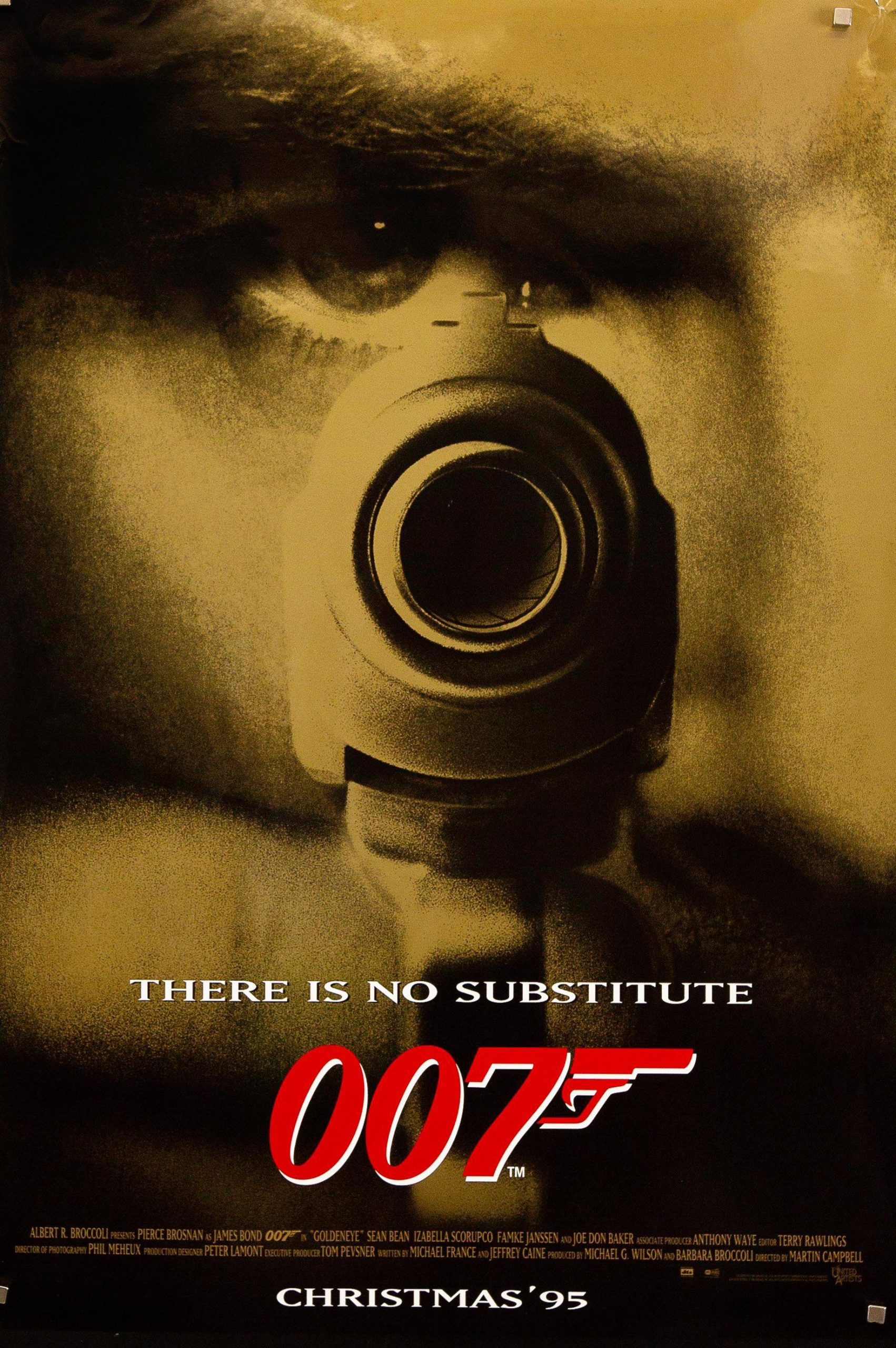
The cuts included the visible bullet impact to Trevelyan’s head when he is shot in the prologue, several additional deaths during the sequence in which Onatopp guns down the workers at the Severnaya station, more explicit footage and violent behavior in the Canadian Admiral’s death in Monte Carlo, extra footage of Onatopp’s death, and Bond knocking her out with a rabbit punch in the car.
When it came time to finally reveal the new 007 adventure to the world, it was an age before the widespread internet and movie websites. The fact there was a new Bond movie even in the works came as a total surprise to many after six years away. The teaser trailer received a wild reception wherever it played:
When the movie landed in theaters it was a massive smash, and silenced the critics and doubters who considered Bond’s time as done, yet again. In the United Kingdom, it was the third biggest in history at the time, behind Jurassic Park and Batman Forever.
It had the fourth-highest worldwide gross of all films in 1995, and was the most successful Bond film since Moonraker, taking inflation into account.
GoldenEye also grabbed the largest revenue increase over its predecessor of any Bond film – it grossed 83% more worldwide than 1989’s License to Kill.
It also seems to hold up well in the eyes of many Bond fans. In a 2021 Yahoo survey consisting of 2200 movie scholars and Bond superfans, GoldenEye was voted as the best Bond film, beating out Casino Royale and On Her Majesty’s Secret Service.
Do You Expect Us To Talk?
Stark: Oh man, I remember this! I remember that people genuinely thought that Bond was over and that there would be no more Bond movies. Six years is just the blink of an eye today, but back then it felt like an absolute age. Historically and cinematically, I guess it was.
Wrenage: The six years between License to Kill and GoldenEye was where the vibe of 1980s entertainment died for good. If Bond was going to perish, this was a prime window for it to happen.
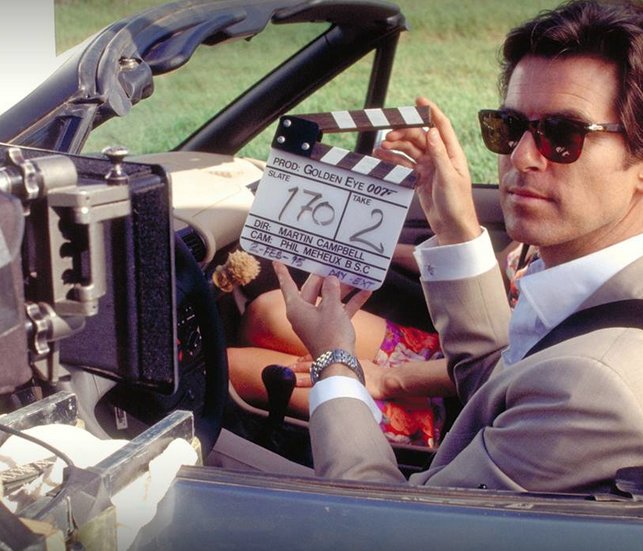
Stark: I remember all the commentary at the time. Bond couldn’t possibly return. The world was too different now, and all that. I remember the roof nearly coming off a theater in the US when that teaser played for the first time. I think it was before Species, of all movies!
Wrenage: Unforgiven deconstructed the archetype that basically every action hero was built upon. Terminator 2 and Jurassic Park pushed special effects into a new world. Michael Bay was on the cusp of flipping action movies into over-the-top boomfests. Jim Carrey arrived and conquered all in his path.
The gravity of Pulp Fiction and Seven would start pulling movies into new, copiously-copied directions. Not even music was safe as Nirvana upended the rock industry.
This is the scene Bond came limping into, perhaps weakened and ready to be torn apart.
I remember being low-grade annoyed with GoldenEye. It essentially displayed an early form of wokeness, in my opinion. Self-reflective moments where Bond questioned his methods were tedious. The attempt to address the character’s sexism came off as limp. A female M was clearly overcompensating for her lack of testicular fortitude.
Stark: I feel we are going to be going in different directions on this one…
Wrenage: GoldenEye also displayed a total lack of style. It could have been a show on The WB. I stated that the Dalton Bond movies didn’t feel like Bond movies. They felt like they came from the same place as Never Say Never Again. Nevertheless, the darker take on Bond worked well enough onscreen. GoldenEye felt like it didn’t know how to present itself in a new era. Will I feel differently upon this viewing? I am curious to find out myself…
Stark: Yup… we are definitely going to go in different directions on this one…
Ranking And Rating
Let’s get to the ratings and rankings. Wrenage and Stark will give their opinions on the Bondian elements found in GoldenEye and come up with a score and ranking to place them appropriately in their league table of all things Bond.
Bond
Stark: So is there a man who looks more like he was born to play the role of James Bond more than Brosnan at the age he was here? He definitely had the “something”… but he also gets a little hamstrung by being the fifth Bond. Most of the major bases have been covered by the previous four actors, so almost by default he’s got all the bases to cover and perhaps then, as a result, struggles to define a distinct iteration of 007.
Wrenage: If you asked me to rank the Bonds before I embarked on this in-depth excursion into the 007 universe, I would have ranked Brosnan number five. Is he terrible? No, he simply doesn’t seem comfortable in the role, at least not in GoldenEye.
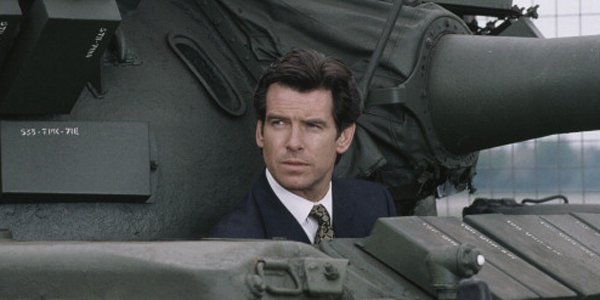
Stark: He’s basically a really good all-rounder which, unfortunately, does make it hard for him to massively stand out. I disagree about his comfort though. This is a very strong Bond debut and by the time the mission briefing and Q scene are done, it feels as comfortable as a pair of well-worn slippers to me.
Wrenage: Brosnan is also not as good at delivering quips as Moore or Connery. Connery was dry as a popcorn fart. Moore embraced the humor, for good or bad. Brosnan comes off as apologetic, like he’s telling dad jokes and is a bit embarrassed by it.
Stark: You kinda had to, by this stage though. You can’t have a sex-crazed female villain called Onatopp and not lean into that in the 1990s. It is not the 1960s and you have to own it post Austin Powers.
Wrenage: Action-wise, Brosnan is better at fight scenes than expected. He has a litheness that the actors who came before him lacked. Connery was a sledgehammer; Lazenby was undercranked; and, let’s face it, Moore was all about the awkward judo-chop.
On the other hand, Brosnan clearly went to the Tom Cruise School of Running, and he tends to pose too much when shooting guns, like Austin Powers is offscreen with a camera yelling, “You’re a tiger, baby!”
Stark: His choppy-handed running style really stands out in a few scenes. I think it reached its zenith in Die Another Day.
Wrenage: Some of Brosnan’s misplacement could be chalked up to the approach Eon took. They are trying for a more grounded, real-world aspect in the look, locations and sets. Yet, they are also trying to shoehorn in a fantastical element with space-based weapons and hidden bases. Brosnan gets caught in the middle and has to perform a Bond that averages out across the board.
Stark: Exactly what I was saying. The bases have already been covered. We had all the evolutions across the previous four actors. Brosnan has to cover all the bases.
Wrenage: Another lame aspect is the times Brosnan’s Bond says “yes, sir” to Natayla in acknowledgement of her awesomeness. It rings of apologetic writing on the part of Eon in an effort to appease the type of women who didn’t watch Bond in the first place.
If Connery’s Bond said “yes, sir” to a woman, it would have been to someone like Klebb as a cutting remark about their manly looks and lesbianism.
If Moore’s Bond said “yes, sir” to a woman, it would have been because his contact was a bearded woman in a circus. When Brosnan’s Bond says “yes, sir” to a woman, he comes off as a simp.
Stark: You really took that from that line? Seems like he’s being a little saracastic to me.
Wrenage: The Emperor is definitely whispering in my ear on this one!
Bond Girl
Wrenage: Izabell Scorupco is another Swede, joining the likes of Maud Adams, Britt Ekland, and Kristina Wayborn. Natalya is supposed to be a scientist Bond picks up along the way to help him unravel the mystery. That is fine, but her character also has to be a sermonizer, which isn’t as fine.
Twice, Natalya preaches about the violence of men, and we don’t care in either instance because we like that Bond is a man of violence. That is why we watch him. No toxicity exists about it either. It is escapism fantasy where good guys get to punch out bad guys or, even better, shoot them.
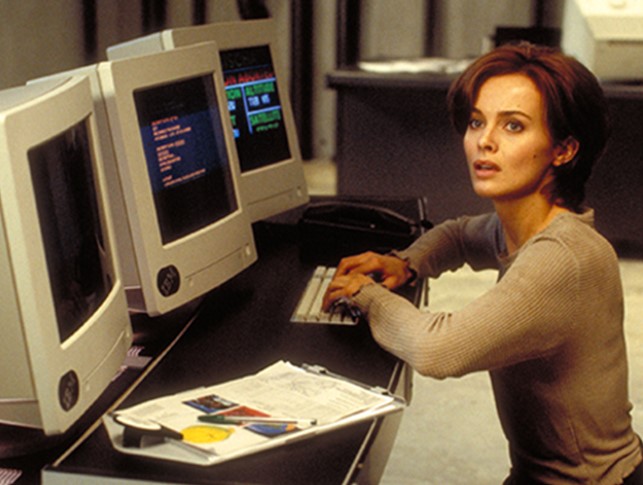
Stark: Yes, but a lot of things in this movie are a direct response the howls that Bond was done and it was a relic of the past and couldn’t possibly survive etc. It really is impossible to state just how loud that noise was as the release of GoldenEye approached. Part of it is proving that there still exists a need for a man of violence on the good guy’s side.
Wrenage: You know what else I don’t like about Natalya? I hate what she does to that poor computer salesman. He obviously isn’t doing super well. He’s just a man trying to start a business in the new Russia. She comes in with a dream order that would probably put him in borscht for the rest of the year, and it is all a lie so she can IM Boris. Horrible woman!
Stark: This is the reverse Stacey Sutton situation developing here. Is there a Natalya in your past that broke your heart? Is this the source of this rage?
Wrenage: Not at all. That’s just silly. Now, if you’ll excuse me for a moment, I have to call my therapist. Not about this question you just raised. Not. At. All. My therapist just…wants to borrow a…punch bowl. So, yeah…need to touch base with her on that. Be right back!
Wrenage: Okay. I feel better now. That punch bowl thing was just stressful, you know? I thought she loved me. I mean, I thought it loved me. I mean, that’s just stupid. Punch bowls can’t love. Whatever. Moving on…
Stark: No, you’ve gone again…
Wrenage: Technically, M counts as a Bond Girl now, too. The attempt to introduce a female M in Goldeneye is a distraction because the movie is too self-conscious about it. The scene where M tells Bond that he is wrong if he thinks she doesn’t have the balls to send a man to his death is classic lady-doth-protest-too-much.
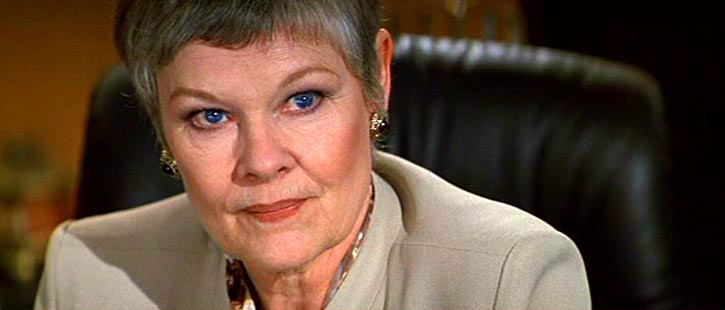
Bernard Lee never had to prove himself a badass. He was just a man who gave Bond details about the mission. Judi Dench is better in future movies, but she is like a punch bowl that leaves you here.
Stark: Again, I am totally opposite to you here. I remember the outrage about the new M being a woman and I thought she smashed it. I love the scene where she appears behind Tanner just as he is laying into her. I think she completely turns all the criticism around in just a few short scenes and is an excellent M, twice, for two different Bonds.
Wrenage: Probably the best Bond girl in GoldenEye is Minnie Driver as a terrible singer.
Stark: Weird little cameo, isn’t it? She’s actually a really good singer and her career was taking off. She’s uncredited, too. I wonder how this all came about?
Villains
Stark: Sean Bean was pretty massive in the UK at the time due to Sharpe, but he wasn’t that well known globally outside of his bad guy role in Patriot Games. Remembering the villain role was originally to be an older former mentor of Bond, I am pleased the dynamic was changed and they went for a peer.
Wrenage: Sean Bean is really good at shooting guns on film. Dude doesn’t blink at all. It is hard to hate on Bean. It is also hard to sing praises of him as Trevelyan.
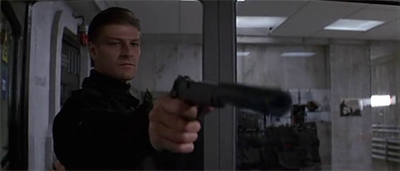
Stark: Again we are diverging. I kind of like him as the dark reflection of Bond and his equal in many ways. I like the quippy exchanges between them in the pre-title as colleagues going about their work.
Wrenage: I find Trevelyan a bit bland in presentation, and the film does Bean no favors by forcing him to be oh-so-serious throughout. He doesn’t get to have much fun with the role. He has to lament his victimhood and do things like ask Bond if all those vodka martinis silence the screams of all the men he killed.
Stark: That is borrowed directly from Fleming. Bond’s entire enjoyment of the finer things in life, including his borderline alcoholism, is a direct response to him really knowing that what he does for a living isn’t nice. He’s a bit nihilistic at times. Also, in the context of the film, it’s a snide response to Bond trying to get in his head. Afterall, he starts the line with “Spare me the Freud!”
Wrenage: I don’t want those screams silenced. Crank up that Wilhelm Machine up, man! Meanwhile, Alan Cumming as Boris needed dialing back. For whatever reason, they told Cumming to make his accent sound even more like he was chewing on mashed potatoes.
Stark: We agree on that. Cumming seems to have wandered in via a time warp from Diamonds Are Forever and the words “Can you possibly tone it down a bit?” don’t seem to have been uttered at all.
Wrenage: On the other side of the scale, Ourumov could have been used more. He had a weaselly quality not fully mined. If they could have somehow cut Boris and given Ourumov more to do, that might have made for a stronger villain dynamic.
Stark: Agree entirely. These days it feels like some reshoots might have done exactly that. Fix it in post! I think if there is one improvement I would make to GoldenEye, it is that.
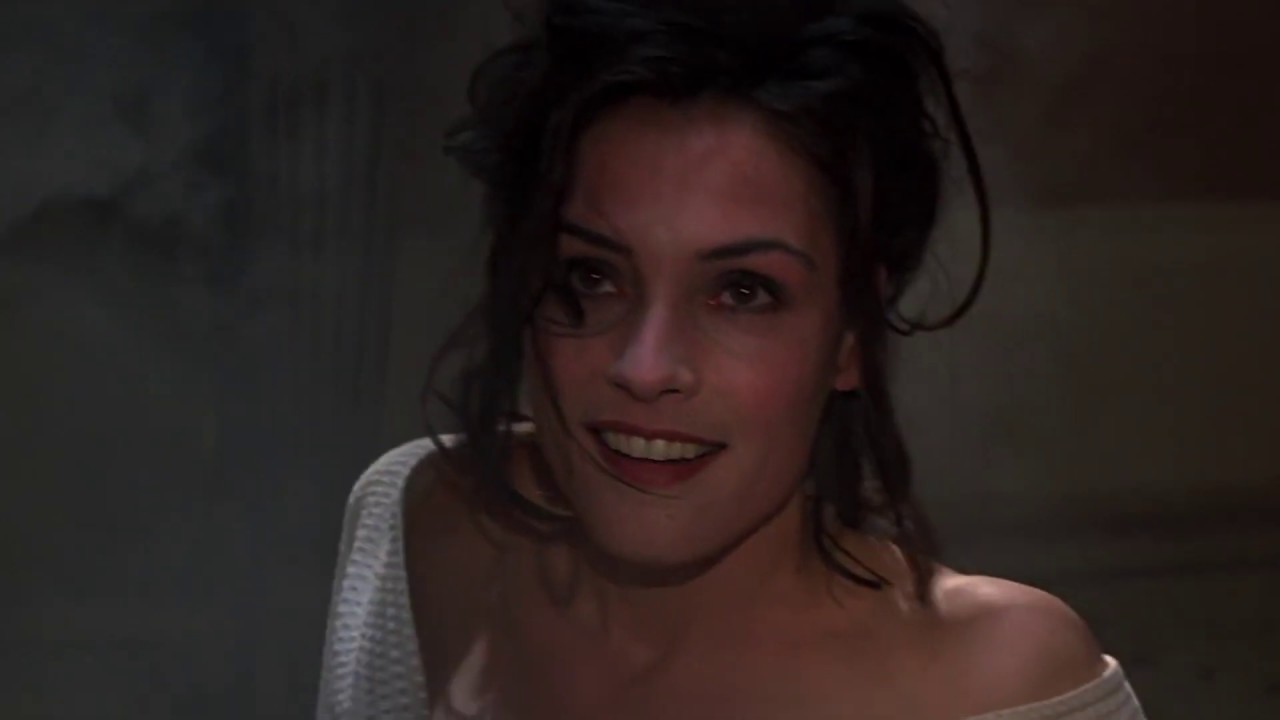
Wrenage: And then there is Famke. She has some good moments, like when she is playing cards against Bond or calling him a “Bitch!” She also has some bad moments, like when they overplay her sadistic fetish. Still, Famke ends up as probably the most entertaining part of the villain gallery. I finally noticed that the tree on which she died is supposed to evoke the image of legs and a crotch. She died as she lived…
Stark: They toned down some of her sexy fun-times and sex noises while killing. She was a proper dirtbird before the cuts! I enjoy her character. I am glad she exists. Famke Janssen was also a complete and total smoke show for this appearance. I enjoy the fight with Bond in the swimming baths – “You don’t need the gun.” – “That depends on your definition of safe sex.”
Plot
Stark: Straightforward stolen weapon at its core. That does feel like something we have seen many times before. It’s the other stuff going on around it that makes it more interesting to me. Bond vs. Alec, the changing political climate, a new 007. The GoldenEye itself is just a thing. It is there.
Wrenage: GoldenEye is a theft plot with some revenge and political intrigue thrown in. On paper, it is not unreasonable. Onscreen, it comes off as discombobulated. Everything does come together eventually, but the process never really hooks the viewer. Ultimately, GoldenEye can’t really decide if it wants to be cool, fun, or meaningful, so it ends up as none of those things.
Stark: I think it elegantly straddles a lot of the bases. It has the humor, but also the violence. It has the political stuff, and also the space weapon and lake base. It has the memorable hench(wo)man but a villain who is a match for Bond. Ticks a lot of boxes. People moan if you go too far into an area that takes some of that out. See my dislike of Diamonds Are Forever, or some of the commentary around Craig’s interpretation.
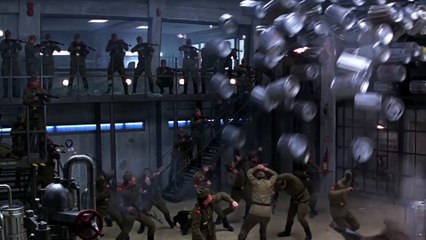
Wrenage: Giving Bond more emotional depth is possible. They did it in On Her Majesty’s Secret Service, but they went about it better. Bond’s emotional journey with Tracy was the story in that film. Everything else, like Blofeld’s plot, was merely in orbit around it.
Stark: And yet Secret Service took years to become properly appreciated, while Craig’s dead-on-balls-accurate portrayal of the Fleming version of the character is disliked by some. Moore too clownish for some others. Here comes something of a blend, and that is a bad thing too? Feels like they can’t win, sometimes.
Wrenage: The good news is that I warm up to Brosnan as he gets a couple more movies under his belt. But that is a tale for another day! Perhaps another day that one could even die upon…
Action Sequences
Wrenage: The action in GoldenEye is decent. The fist fights are pretty good, especially the one between Bond and Trevelyan at the end. The gun fights are also pretty good, like the library shootout.
The tank chase is fantastic…until the statue gag, of course. One could make a whole movie about a tank running over things. (Somewhere, a producer reads this and is making inquiries into the remake rights of James Garner’s Tank as we speak…) I especially like the part of the tank sequence where Bond absolutely obliterates a police car, and in the next shot, the cops roll out of it, completely unharmed. In reality, they should have been leaking out of cracks in the wreckage like strawberry jam.
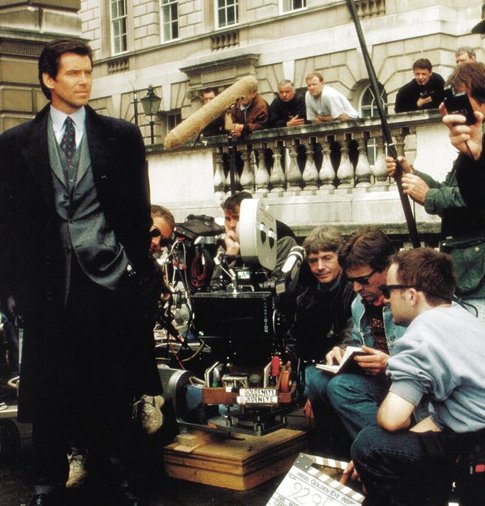
Stark: The A-Team syndrome! I think mashed-up people get you in trouble with the ratings people, even if they are Russians. The fight on the dish with Bond vs 006 is excellent. Probably a level of violence we haven’t seen since Red Grant on a train.
Wrenage: It was aces of Bond to simple drop Trevelyan. Then the filmmakers undercut that by having Trevelyan somehow survive the fall for a brief coda before exiting the film for good. Then Bond somehow jumped to the helicopter skid without the helicopter’s rotors getting shattered the the antenna’s superstructure. The movie should have gotten out of that sequence sooner. Bond drops Trevelyan. Bond reflects a moment. Boom. Done!
Pre-Title Sequence
Stark: All around excellent to me with one notable exception. One point where the Bond tendency to just go too far really comes into play.
Wrenage: The pre-title starts off reasonably well. The bungee cord jump is awe-inducing. The fight in the dam is fine. The reveal of the new Bond in a toilet is a bit cutsie-poo, though. The Living Daylights reveal of the new Bond was much more simple and better. A turn to the camera, motivated by an agent’s scream with the Bond theme played is primo.
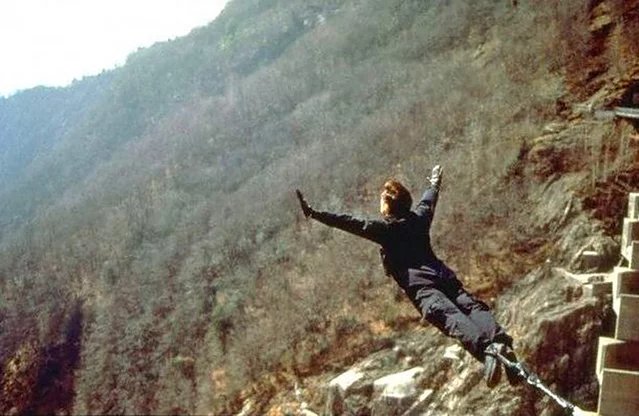
The part where Bond hides behind the squeaky cart while all the Russians have AK-47s pointed at him is a fun little sequence, but then, yet, things start to go awry.
You can kind of see how the rest of the pre-title developed. Someone in the writing room said:
We’ve had Bond jump out of lots of planes. What if he jumped into one?
I can then see whoever was in charge of that meeting channeling the drill sergeant from Forrest Gump:
Stark: Yup. That is exactly the point. To me, it is in danger of undoing all the awesomeness that has come before. It clearly doesn’t quite work, and yet they persist. It’s a moment like the swanny whistle in The Man With The Golden Gun… or that fucking pigeon!
A real guy rides a real motorbike off a real cliff behind a real plane. And you can see it’s all real on screen. It’s exceptional, it’s jaw-dropping. So why ruin it with a weird background mat shot and overwhelm the willing suspension of disbelief?
There are several ways to have had almost the same outcome but achieved it in better ways. Have him dive onto the plane the moment it goes over the edge. Have him already gripping the wing strut as it goes over.
You can see it is not working. I can’t help but think that the steady hand of Cubby would have dealt with it.
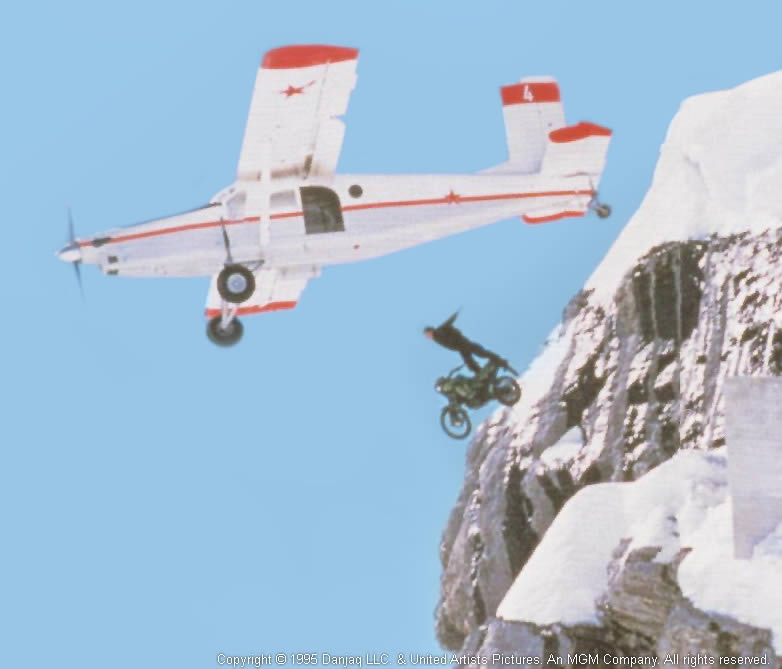
Theme Song And Score
Stark: The title sequence and the song are pretty good. Neither completely traditional nor completely new. Maybe another thing for your “middle of the road” gripes about the movie?
Wrenage: The theme song by Tina Turn is solid. It does a good job of bringing a new sound to the table. It is not a classic crooner, nor a pop hit. It has a big orchestral sound with a modern-jazzy huskiness to it.
Stark: First time Danny Kleinman steps into the title designer role, with a rather funky update and style to the classic Bond iconography. I dig that. I dig that a lot. That score though, the overall score… well… oof! This is a complete mistake. What in the name of John Barry’s piano stool were they thinking?
Wrenage: We can definitely rally around that point. I loathe the score on GoldenEye. Other Bond films tried for a modern score, like The Spy Who Loved Me, but GoldenEye sounds modern in that it was maybe recorded inside of a toilet bowl. The reverb they use on the percussion brings to mind bathroom acoustics.
Stark: It sounds like a collection of pots and pans being thrown down a metal fire escape that occasionally, accidentally, resembles the Bond theme.
Wrenage: The only time the music came alive was when it used the classic Bond theme during the tank chase.
Stark: I don’t get it. Arguably the most iconic riff in all of movie music, and they go in this direction? They asked Barry to return and he said he was still retired. I think GoldenEye with a Barry score would have been a totally different experience for you.
X-Factor
Stark: New Bond, Monte Carlo, London, Russia and Cuba. An Aston Martin DB5. It is kind of all there.
Wrenage: This was miniature-wrangler extraordinaire Derek Medding’s final film. Meddings had cancer while working on GoldenEye. Meddings has done some great work. Unfortunately, GoldenEye is not the best in the miniature department. At times, it harkens back to the base in Dr. No.
The wonky miniatures really stuck out in 1995, too. Other films were switching to CGI for these sort of things. One of the last films to use excellent miniatures was Total Recall, and that was from 1990, which goes to show how far behind GoldenEye was in that regard. Since then, miniatures have still found films on which to shine, like the Lord of the Rings trilogy, but the miniatures are not strong on Goldeneye.
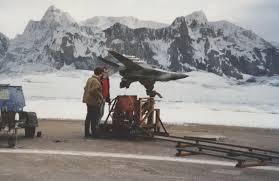
Stark: You would be surprised. Lot’s of stuff, even on Independence Day, was still done with miniatures. Always hard to do, though. I always find my brain switching to Thunderbirds mode when the miniatures are too obvious. Can I perhaps interest you in a little Hollywood History, perchance?
Wrenage: Good call on Independence Day. One wonders if Broccoli and company made an effort to ensure Meddings was a part of the film due to his history with the franchise, and he just couldn’t deliver up to standards due to his illness. Then again, crashing Migs into a satellite radio antenna would be challenging for any miniature department.
In the end, I will always remember Meddings as the mad genius who used salt as the contrails from launching space shuttles in Moonraker. Brilliant!
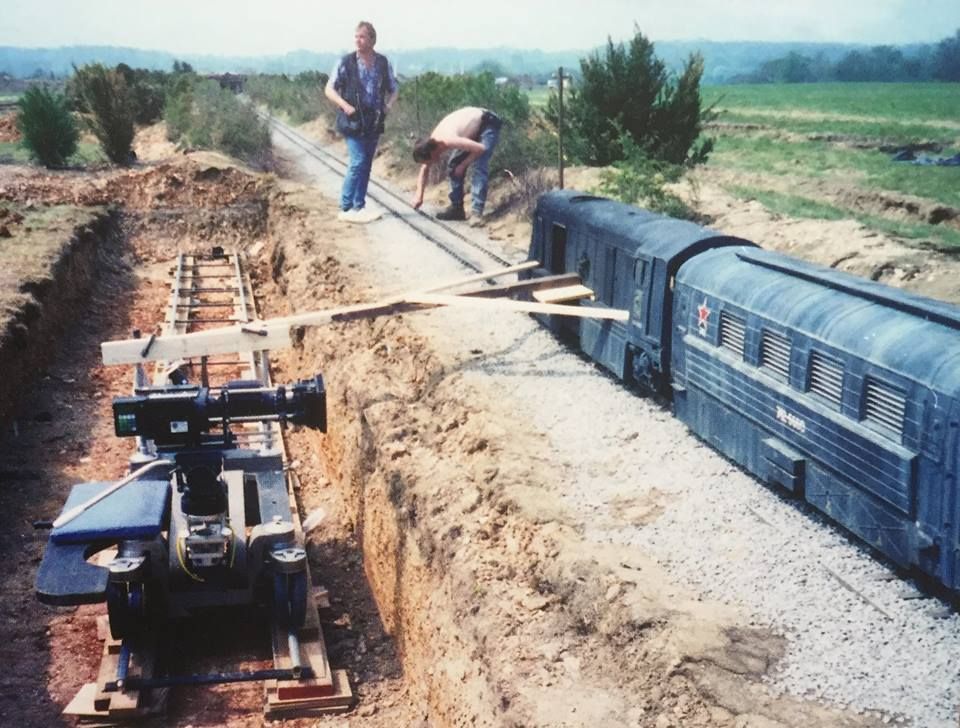
Stark: The world lost a true artist. He was exceptionally talented.
Wrenage: Joe Don Baker also returns, this time as a good guy. This is not without precedence. Charles Gray was a good guy in You Only Live Twice and then played Blofeld in Diamonds Are Forever. Regardless, Baker doesn’t seem to fit into this type of role. He’s more of a “good ol’ boy” type and a physical presence (like in Charley Varrick) than a CIA operative.
Stark: I never quite understood why Felix Leiter didn’t return. In the books he gets his leg and arm bitten off in the second novel. He still turns up with hooks and prosthetics in subsequent stories. Baker is fine in the role, and he has fun dialogue with Bond.
Wrenage: I never liked Baker’s scene at the end of GoldenEye either, where Bond and Natalya think they are alone, and then a bunch of troops come out of hiding. The troops are fine, but I hate how three Huey helicopters also drop into frame. Yep, Bond and Natalya didn’t notice three helicopters hovering about a hundred yards away. Sounds reasonable…
Stark: It’s that too far, too much lack of restraint again. The well-hidden troops popping up would have been absolutely fine on its own.
Scoring Breakdown
| Stark | Wrenage | |
| Bond | 7 | 5 |
| Bond Girl | 6 | 4 |
| Villain | 6 | 5 |
| Plot | 6 | 5 |
| Action Sequences | 7 | 6 |
| Pre-Title Sequence | 7 | 6 |
| Theme Song | 6 | 7 |
| X-Factor | 6 | 5 |
| TOTAL | 51 | 43 |
Stark: So I place it about as good as For Your Eyes Only and You Only Live Twice, you place it as lower than A View To A Kill? I can see some interesting comments potentially coming from Outposters in the Disqus on this one!
Wrenage: Despite not liking GoldenEye that much, I am relatively pleased that I wasn’t that far off the scores of a fan of the movie. I am only one point off you in most categories. I really only ding GoldenEye on Bond and the Bond Girl. I’m borderline magnanimous really, a fine all-around human being that certainly doesn’t deserve the stress of punch bowls. I mean, how stupid are punch bowls anyway? You dip a big spoon in them to fill your glass? Punch bowls are just confused stewpots. Screw them!
Stark: I have no idea where you are going this. Do we need more Stacey Sutton-level support for your issues here?
Overall Rankings
So a combined score from us that drops it into the third tier. That just feels wrong to Stark, but sounds like it is about right for Wrenage. The widest gap between opinions so far? It could well be.
First Tier:
From Russia With Love (61.5)
On Her Majesty’s Secret Service (61)
The Spy Who Loved Me (59.5)
Dr. No (56.5)
Licence To Kill (56)
Second Tier:
Goldfinger (54.5)
Thunderball (53.1)
Live and Let Die (53)
You Only Live Twice (51.5)
For Your Eyes Only (51.5)
Third Tier:
Octopussy (51)
The Living Daylights (50.5)
Moonraker (48.5)
A View To A Kill (48)
GoldenEye (47)
Fourth Tier:
The Man With The Golden Gun (38.5)
Diamonds Are Forever (34.5)
Stark: This feels like a miscarriage of Bondian justice. A movie that seems well-regarded among fans being this low. Then again, The Living Daylights is down there as well. This definitely feels like we are getting to the business end of things now, and some sticky decisions are having to be made.
Wrenage: I was actually surprised to hear GoldenEye was so well-regarded by fans and voted as the best Bond in a Yahoo survey. Then again, I have read Yahoo comments, so…
Stark: This is the absolute beauty of Bond. I have said it all along. Constantly changing, evolving, but within the framework. And people moaning and whinging about a certain version of Bond don’t seem to understand. They can just shut up and an entirely different kind of Bond that they might like will be along in a minute. Some dig Moore, others rate Craig. That’s just Bond life!
That’s A Wrap
Wrenage: And there you have it…I didn’t particularly like GoldenEye when I first saw it, was lukewarm toward it between now and then, and maybe like it even less today. It appears my inner grump has come out on this one. Perhaps, Barbara Broccoli was the issue. This is where they let her on as an official producer, and she maybe didn’t have the chops to wield that much influence yet.
Stark: Cubby was very ill, and failing fast by this stage. Maybe, in my head, he would have changed the plane jump at the start, run Eric Serra off the production and got a proper score, and told Alan Cumming to sort himself out, if he was around. Change those things and it would be top tier for me.
Wrenage: Are you sure you aren’t confusing the video game with the movie? Oh well…whatever. Let’s go have a drink, and if you order punch, I will murder you…
Stark: Leaving aside your weird punch hang up… it does feel that we absolutely have to mention the GoldenEye 64 video game. Wow. Just… wow! What a fucking game! Now, about this punch…
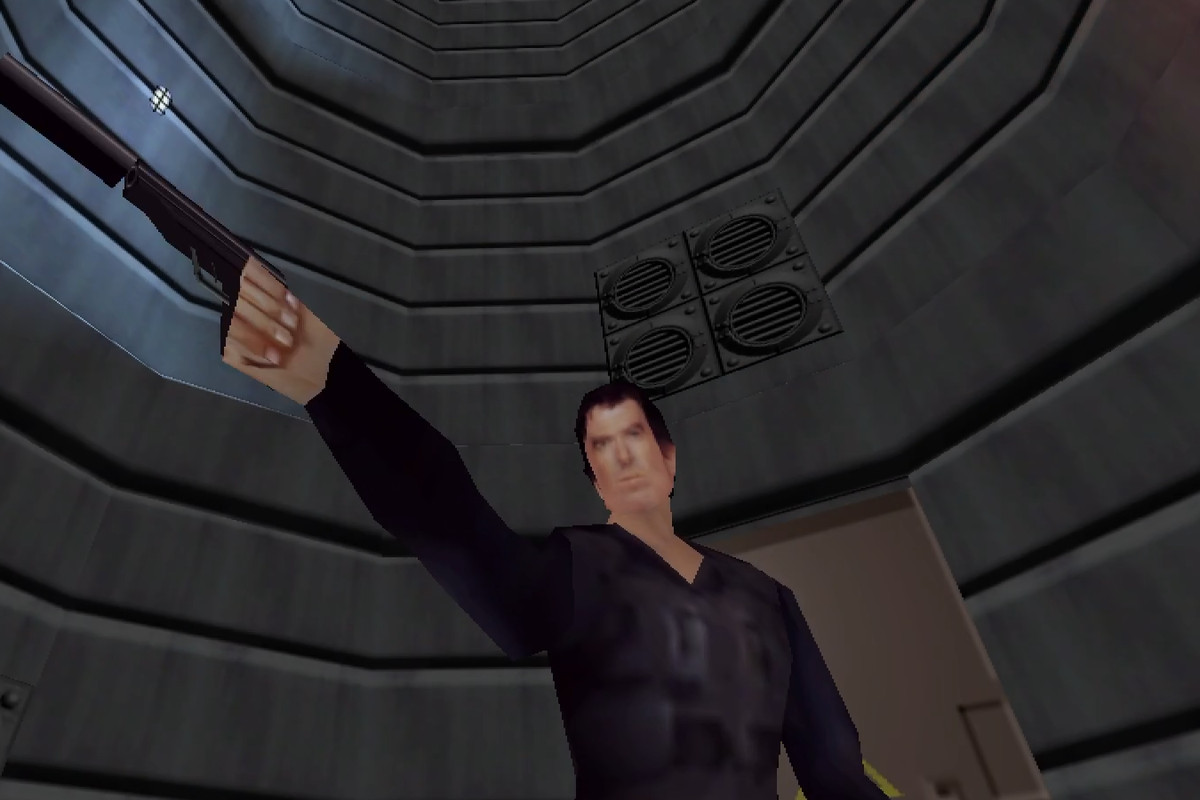
NEXT TIME… Brosnan is back and settling in. The franchise puts some legal issues behind it and moves forward with Tomorrow Never Dies.
Meanwhile, check out the rest of our Bond On series as we take a walk through all the Bond movies in order: Dr. No, From Russia With Love, Goldfinger, Thunderball, You Only Live Twice, On Her Majesty’s Secret Service, Diamonds Are Forever, Live And Let Die, The Man With The Golden Gun, The Spy Who Loved Me, Moonraker, For Your Eyes Only, a two-way Battle Of The Bonds for Octopussy and Never Say Never Again, A View To A Kill, The Living Daylights and our most recent entry, Licence To Kill.
Check back every day for movie news and reviews at the Last Movie Outpost


